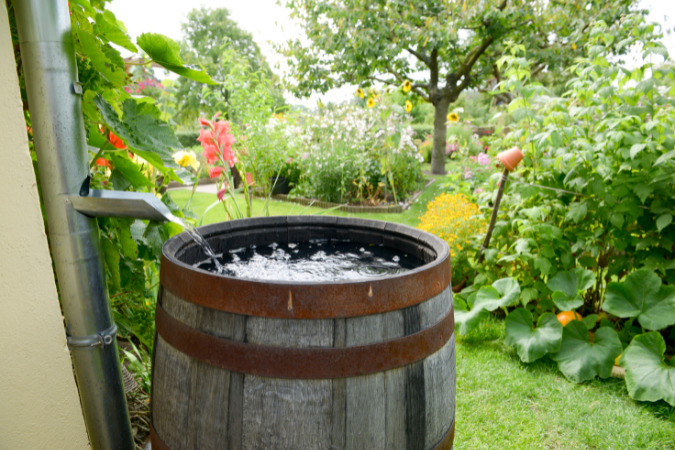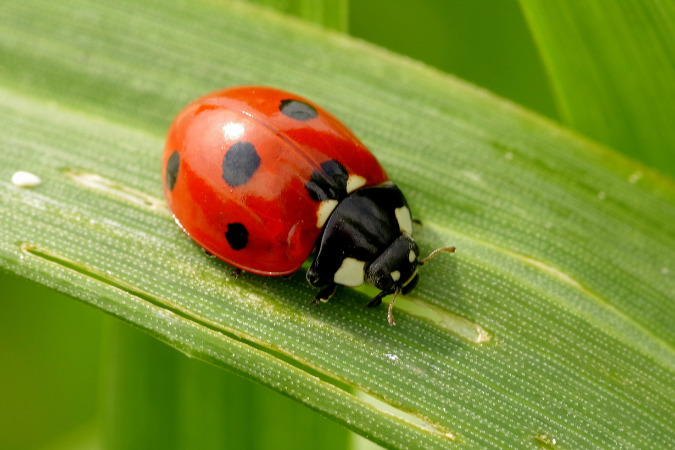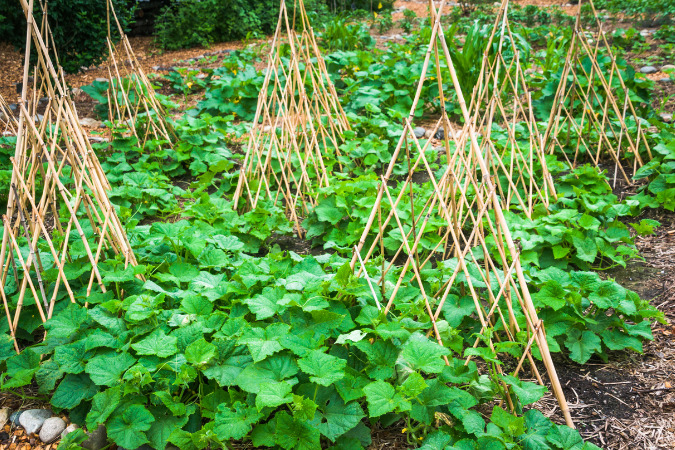Gardening is a fulfilling hobby that offers countless benefits for both physical and mental well-being. However, many traditional gardening practices can have a negative impact on the environment. By embracing sustainable and eco-friendly gardening techniques, you can create a thriving garden that benefits not only you but also the planet. In this article, we’ll discuss various sustainable gardening practices, eco-friendly materials, plant selection, permaculture principles, and ways to get involved in your community to promote environmentally responsible gardening.

Sustainable Gardening Practices
Composting and Reducing Waste

One of the cornerstones of sustainable gardening is composting. By turning your kitchen scraps, yard waste, and other organic materials into nutrient-rich compost, you can provide your plants with natural fertilizers while reducing the amount of waste that ends up in landfills. Composting also helps improve soil structure and water retention, which contributes to healthier plants and reduced water usage.
Water Conservation Techniques

Water is a precious resource, and using it wisely is essential for sustainable gardening. There are several ways to conserve water in your garden, such as using rain barrels to collect rainwater, installing a drip irrigation system, or using mulch to reduce evaporation and retain moisture in the soil.
Natural Pest Control Methods
Instead of relying on chemical pesticides, consider using natural pest control methods to manage pests in your garden. Some eco-friendly pest control techniques include introducing beneficial insects like ladybugs and lacewings, planting companion plants that deter pests, and using physical barriers like floating row covers. Also, by maintaining a healthy garden with diverse plant species, you can create a balanced ecosystem that discourages pest infestations.

Encouraging Biodiversity
Biodiversity is the key to a healthy and sustainable garden. Planting a diverse range of plants can attract beneficial insects, pollinators, and other wildlife that contribute to a thriving ecosystem. By including native plants, you can support local wildlife and create a garden that is more resilient to pests and diseases
Choosing Eco-Friendly Garden Materials
Recycled or Sustainable Materials for Garden Beds and Containers

When creating garden beds or choosing containers, opt for materials that are recycled or sustainably sourced. Examples include reclaimed wood, recycled metal, or plant-based materials like coir or peat pots. By using eco-friendly materials, you can minimize the environmental impact of your garden and promote a sustainable gardening culture.
Non-Toxic Gardening Tools and Supplies

Selecting non-toxic gardening tools and supplies is another essential aspect of eco-friendly gardening. Opt for tools made from sustainable materials like bamboo or FSC-certified wood, and choose natural or biodegradable alternatives to synthetic materials like plastic ties, netting, and weed barriers.
Organic Fertilizers and Soil Amendments
When feeding your plants, choose organic fertilizers and soil amendments instead of synthetic options. Organic fertilizers like compost, worm castings, and well aged manure provide nutrients for your plants while also improving soil health. In addition, incorporating organic matter like compost and aged manure can improve soil structure and water retention, reducing the need for supplemental irrigation.
Plant Selection for a Sustainable Garden
Native Plants and their Benefits
Choosing native plants for your garden can significantly contribute to sustainability. Native plants are well-adapted to local conditions, requiring less water, fertilizer, and maintenance than non-native species. They also provide habitat and food for native pollinators, birds, and other wildlife, contributing to a balanced ecosystem.
Pollinator-Friendly Plants
Pollinators like bees, butterflies, and hummingbirds play a crucial role in plant reproduction and food production. By incorporating pollinator-friendly plants in your garden, you can create a welcoming habitat that supports these essential creatures. Examples of pollinator-friendly plants include lavender, bee balm, sunflowers, and milkweed.
Drought-Tolerant and Low-Maintenance Plant Options
To further reduce the environmental impact of your garden, select drought-tolerant and low-maintenance plants. These plants require less water and care, conserving resources and reducing the need for chemical inputs. Examples of drought-tolerant plants include succulents, lavender, and native grasses.

Permaculture Principles and Techniques

Understanding Permaculture Design
Permaculture is a holistic approach to gardening and agriculture that focuses on creating sustainable and self-sufficient ecosystems. By applying permaculture principles to your garden, you can minimize waste, maximize productivity, and promote biodiversity. Permaculture design involves observing and mimicking natural patterns and processes, creating a diverse and interconnected garden that supports a healthy ecosystem.
Incorporating Edible Plants and Food Forests
One of the core concepts of permaculture is integrating edible plants and food forests into your garden. By growing a diverse range of fruit trees, berry bushes, herbs, and vegetables, you can create a productive and sustainable garden that provides food for both humans and wildlife.
Creating a Closed-Loop System in your Garden
Permaculture aims to create closed-loop systems that minimize waste and maximize resource efficiency. This can be achieved through practices like composting, mulching, and using rainwater harvesting systems. By recycling nutrients and resources within your garden, you can reduce the need for external inputs and create a more self-sufficient and sustainable garden.
Benefits of Permaculture for the Environment
Implementing permaculture principles and techniques in your garden can provide numerous environmental benefits, such as reducing soil erosion, conserving water, supporting biodiversity, and decreasing the need for chemical fertilizers and pesticides. By embracing permaculture, you can create a thriving garden that contributes to the overall health of the planet.
Community Involvement and Sharing Resources
Joining or Starting a Community Garden

Community gardens are a fantastic way to promote sustainable gardening practices while fostering social connections and community engagement. By participating in a community garden, you can learn from experienced gardeners, share resources, and contribute to local food production.
Participating in Seed Swaps and Plant Exchanges
Another great way to foster community involvement and promote sustainability is by participating in seed swaps and plant exchanges. These events allow gardeners to share seeds, plants, and knowledge while reducing the need to purchase new plants and seeds each season. By engaging in seed swaps and plant exchanges, you can discover new plant varieties, learn from fellow gardeners, and contribute to the preservation of heirloom and rare plant species.

Creating a sustainable and eco-friendly garden is a rewarding and environmentally responsible endeavor. By adopting sustainable gardening practices, using eco-friendly materials, selecting suitable plants, incorporating permaculture principles, and engaging with your community, you can create a garden that benefits both you and the planet. Embrace these eco-friendly techniques to transform your garden into a thriving and sustainable oasis that supports a healthier environment for future generations.


